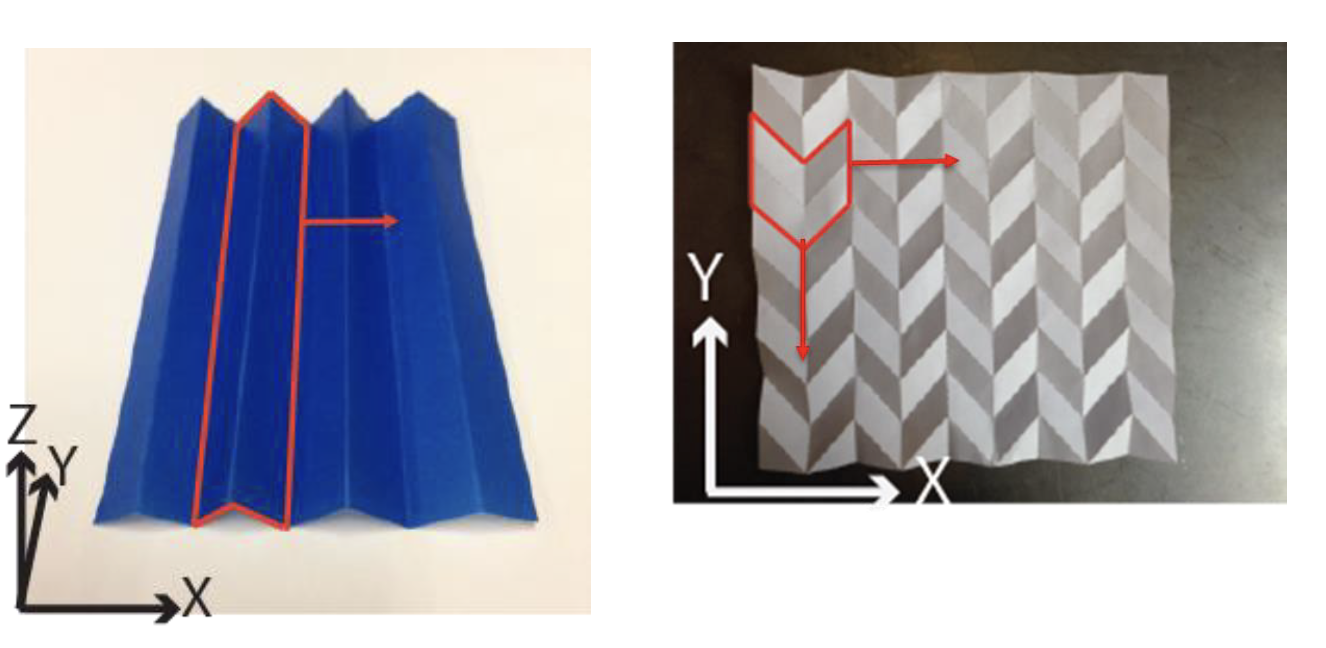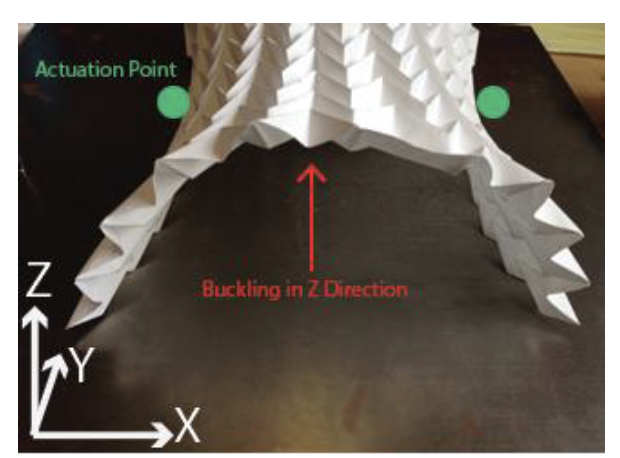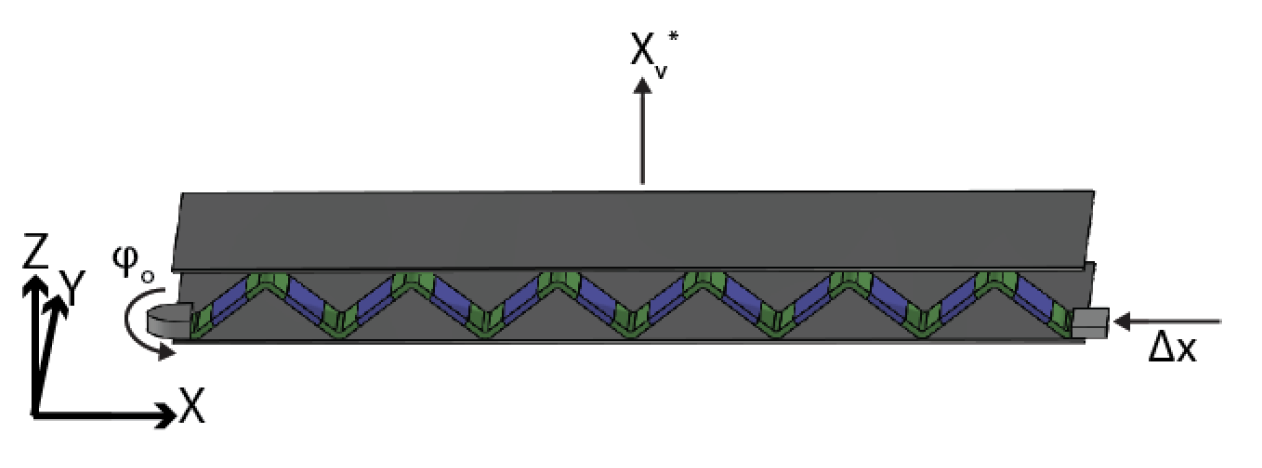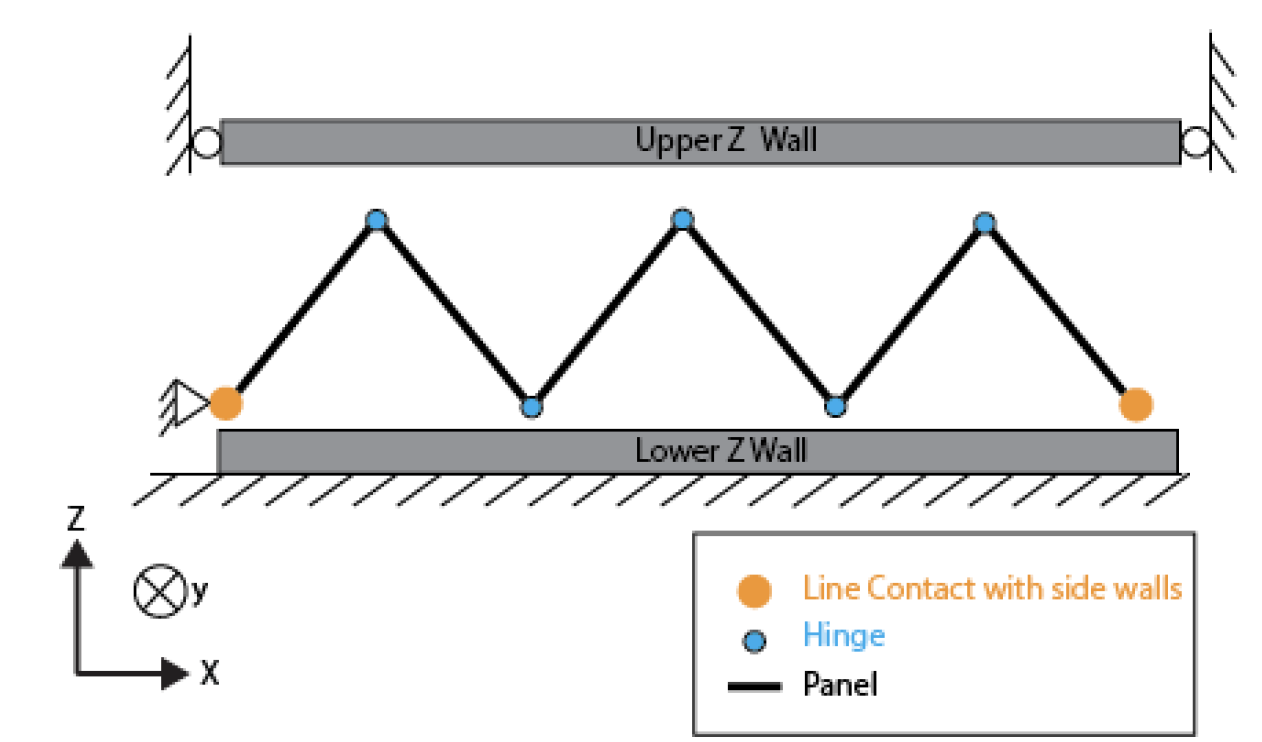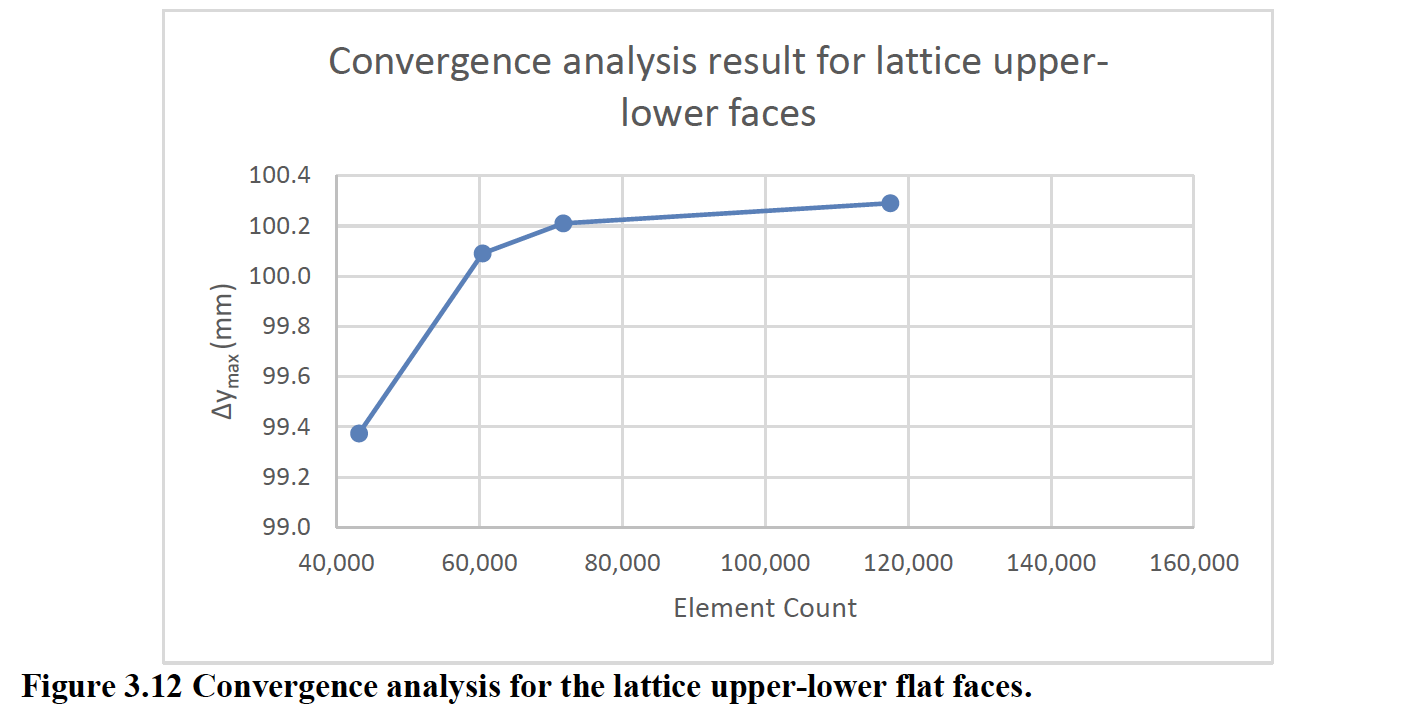Precision Origami Folding
Origami for 2D+ Assembly of Cells
2D assembly methods are precise, well-developed, and low-cost compared to 3D assembly methods. Origami has been proposed as a method for creating 3D cell structures by combining them with 2D assembly methods.
Passive hinges keep the structure low cost and scalable, with folding resulting from external actuation at the origami external boundaries. The constraint of these boundaries thus determine final location accuracy and precision of the folded structure. On the left is a buckled origami structure - an example of what happens when the structure is underconstrained during the folding process.
The goal of this thesis was to 1) understand how to properly constrain the structure to enable folding by external actuation and 2) characterize the ‘twist error’ during folding. One key result is the relative stiffnesses of the plates and hinges for minimal twist error. Another key result is the need for moving ceiling and floor to constrain and allow folding.
The quantitative part of the study characterizing the twist error was a finite element analysis (FEA) in Solidworks Simulation.
Group: Precision Compliant Systems Lab
PI/Thesis Advisor: Professor Martin Culpepper
Origami Structure with Constraints
The design of the constraints reduced degrees of freedom down to two: the horizontal displacement of the wall parallel to the folds, and the angle of the this wall relative to the opposite wall.
Twist Error Response
One objective of the FEA study was to characterize the ‘twist error’ seen on the left as the structure twisting in the horizontal plane. The image on the top left shows the twist, with a peak in the top boundary short of the structure midpoint.
Below on the bottom left shows one plot from the FEA convergence analysis used to verify the study results.
